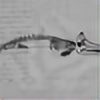HOME | DD
 Eco727 — PH: Tanystropheus
Eco727 — PH: Tanystropheus

Published: 2012-03-12 23:13:33 +0000 UTC; Views: 3351; Favourites: 35; Downloads: 168
Redirect to original
Description
Colored by Julio Lacerda [link]This is from the incredible awesome site The Paleo Handbook. You all should join immediately for more art, community, and a ton of profiles depicting prehistoric creatures as if they were alive
[link]
Tanystropheus longobardicus
Order: Prolacertiformes
Family: Tanystrophidae
Meaning: Long Vertebrae
Period/Time: Triassic, circa 225,000,000 years BC
Range: Europe, China, the Middle East
Diet: Small Fish, Squid, will occasionally scavenge floating carcasses for nutrient supplements
Size: 6 meters (20 ft) long
Habitat: Warm Seas, Found wandering the sands of Open Reefs, Coastline
Social Unit: Solitary, or Mated Pairs
Population: Uncommon
Appearance: T. longobardicus is a bizarre, long necked anomaly. The creature's extraordinary neck and tail make up most of it's body length, and so much so that the animal nearly defies the laws of physics. T. longobardicus is colored rather variably. T. longobardicus in cooler climates have grey skin akin to dolphins, with black and white striped tails. In more tropical climates, T. longobardicus can be found bearing bright, gaudy colors, including exotic greens and blues. They have long, spindly toes, and a whip like tail. The neck is usually out straight in front of the body, but turns in limited directions as well. The legs are thinly muscled, but powerful enough to propel T longobardicus at a respectable speed through the water. The body is only slightly bulkier then a crocodile's, and the head is similar in shape and appearance to that of a sauropod, but the teeth are conical, and are ideal for catching fish.
Behavior: T. longobardicus is almost always found alone in the younger stages of life, except during the mating season, and even at this time, they are only found in isolated pairs. Afterwards, they are found in mated pairs. They mostly amble aimlessly around the sands of coral reefs, looking for food. When a food source, such as a school of fish or squid is sighted, T. longobardicus crouches down and slowly crawls forward, then pushes forward off of it's back legs into the school. It's small head does not alarm the fish, so it is free to snatch a fish or two as it sinks back to the seafloor. The fish usually do not disappear fast enough to alarm the other fish, so this feeding strategy allows T. longobardicus to keep stalking the same school for a while without scaring them away. Eventually, the school either disintegrates or T. longobardicus becomes satisfied and leaves the rest alone. Occasionally, T. longobardicus may scavenge from a floating carcass, reaching up their long neck to snap off pieces. In deeper water, they may have to stand upon their hind legs to do this. They have low, mournful bellows that echo eerily underwater, and can be heard for great distances.
Breeding: During the breeding season, the males of these bizarre reptiles let out a series of long, low calls that echo for miles underwater. The strength and pitch of the call shows the age, health, strength and size of the male, allowing the females to pick and choose which males to mate with. When they mate, they first engage in a courtship ritual called "neck dancing." In this strange yet graceful dance, the two wrap their necks partway around each other and nuzzle. They also move their tails in unison. They then proceed to mate, and the female carries the developing eggs inside her for about two weeks, during which she finds a cave or grotto in the shallows, so that she does not have to exert herself when coming up for air. As the eggs develop, the female becomes heavier, and cannot swim as fast, so the male often catches and brings her mouthfuls of fish, squid, or carrion. If a storm or predator, such as Cymbospondylus natans, threatens the female and she must flee, she can disgorge the eggs prematurely and flee with her mate, since unusually, these reptiles mate for life.
Nesting: When the time for egg-laying has come, the female leaves the water while the male waits just offshore in the surf. Due to the length and awkwardness of T. longobardicus' neck, there is strain in staying away from the support of water for too long, so the female must be quick, as she cannot move very fast, and this puts her in danger from predators, such as Coelophysis bauri and Postosuchus alisonae. Due to this danger, egg-laying is usually at night. The female then digs a hole in the sand, and lays a hundred or so eggs. Then, she quickly buries them and returns to the sea and swims away with her mate. The eggs sit for about two weeks, and the mating season is timed so the eggs are laid two weeks before the full moon. Then, the eggs hatch, and the young quickly scurry into the nearby brush, where they will live for a couple more weeks, growing to about a foot in length on insects. Many are eaten by Thrinaxodon liorhinus, C. bauri, P. alisonae, Kuehneosaurus latus, and even Peteinosaurus zambellii, but around fifty or so survive, and at the end of two weeks, they race to the sea in the night, following the still full moon. The young then must survive for several more years until they reach a large enough size that no predator will bother them, but until then, they must dodge sharks, large fish, nothosaurs and even ichthyosaurs. The males will never make landfall again, but the females will return to lay the eggs of the next generation.
Profile written by "tentacles"
Related content
Comments: 4

excuse me, I think I did not explain, the Tanystropheus is as beautiful as my Dakosaurus
👍: 0 ⏩: 1

that did look at my beautiful reptile Dakosaurus
👍: 0 ⏩: 1


















